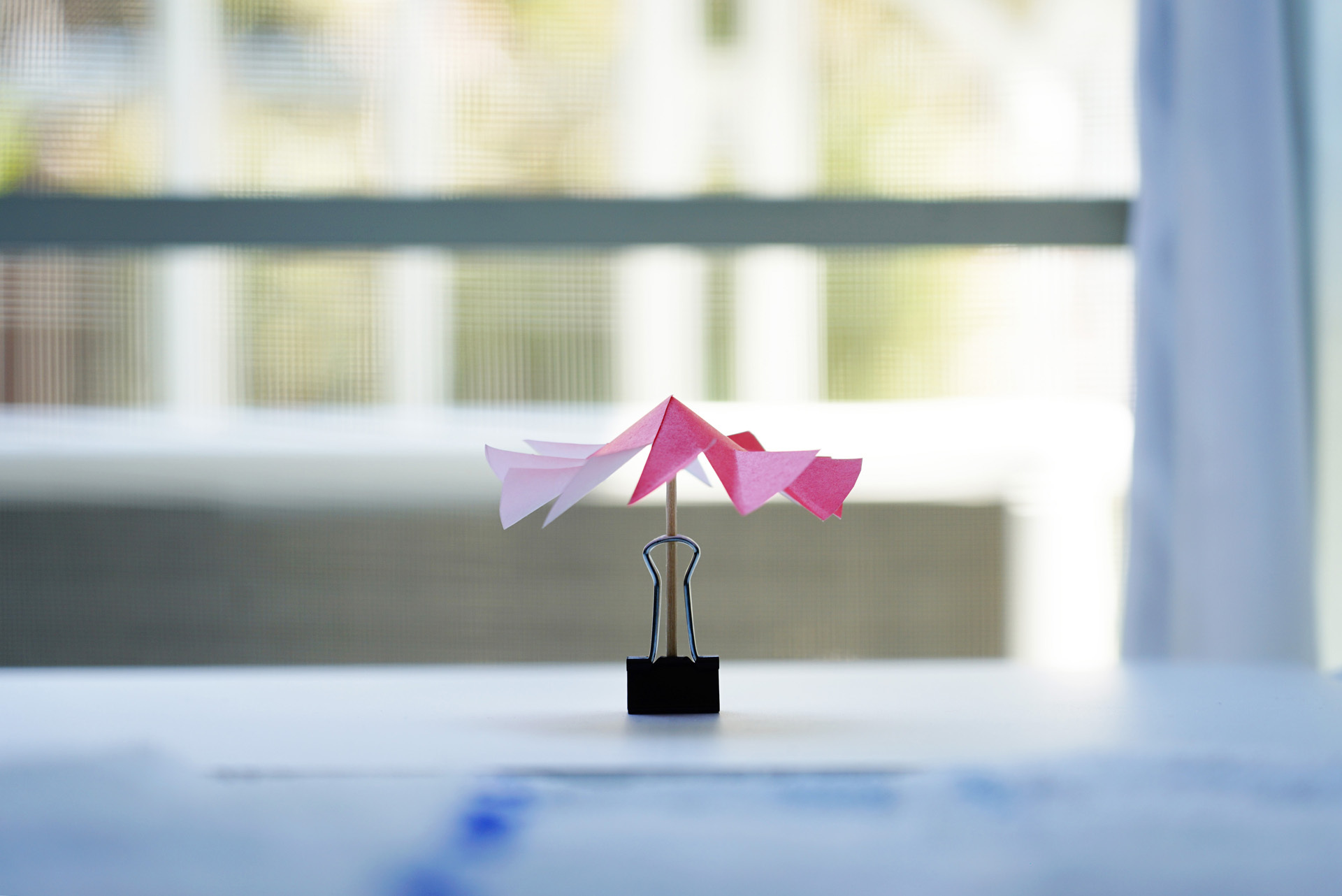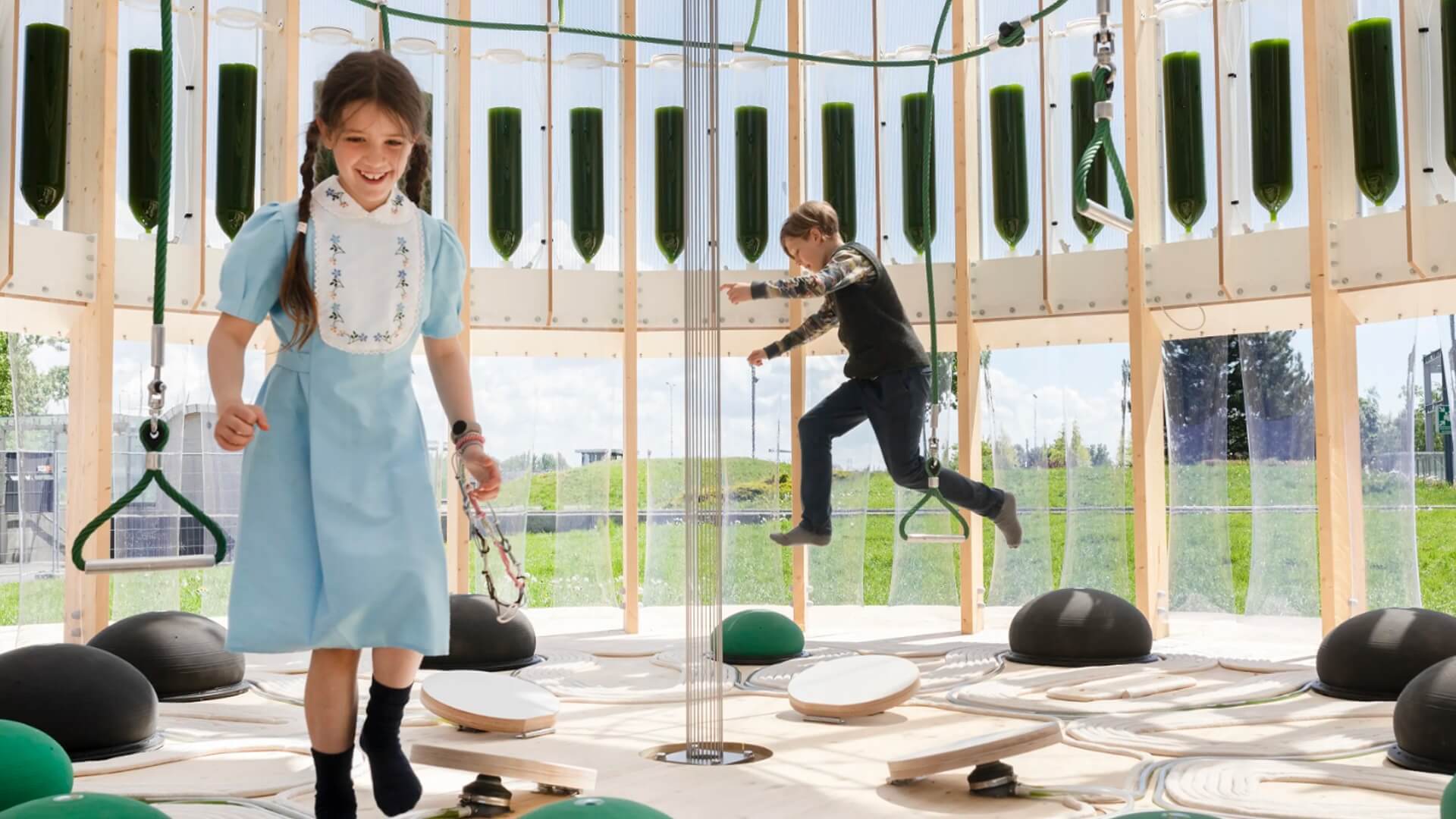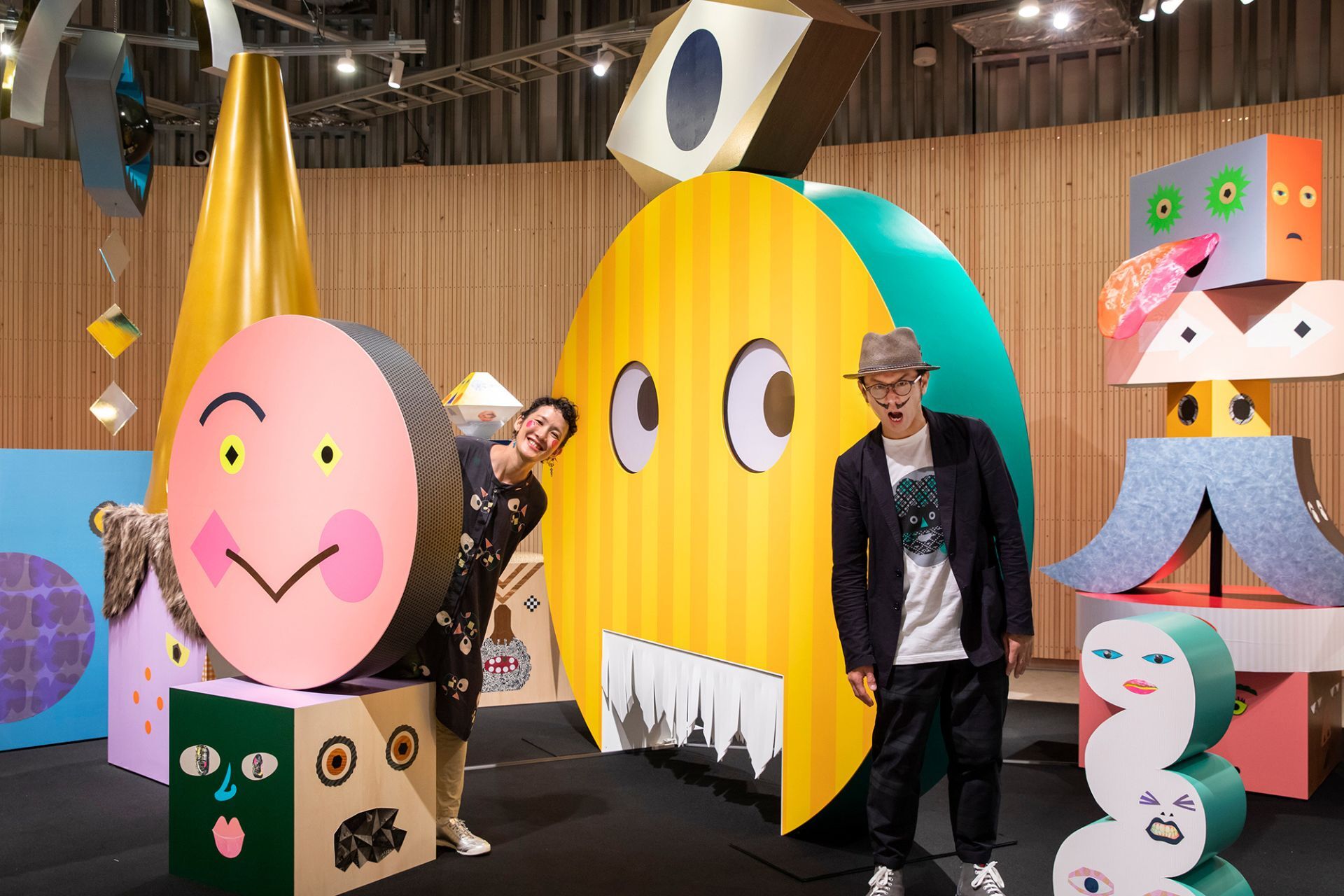As part of the interview series of AWRD, a platform connecting creators and projects, we spoke to creators who have expanded their activities through awards. This time, we spoke to designer Kohei Fujiwara (SEINIKAKU DESIGN), who won the second prize in the “Exploring the Gentleness of Nature AWARD”.
Kohei Fujiwara, who works as a freelance designer, is involved in multiple production activities ranging from two-dimensional to three-dimensional, spatial and visual art. His works, which transcend the boundaries of fields, are impressive for their playful ideas that can be enjoyed by both adults and children, and his output itself shows that he himself truly enjoys his work.
The award-winning work in the Exploring the Gentleness of Nature AWARD, "Sensing the Gentle Breeze: Windmill", was created with the idea of making ventilation, which was forced upon people during the coronavirus epidemic, more fun. Fujiwara's ideas, conceived from someone else's point of view, gently move the hearts of those who come into contact with them.
In this interview, we asked Mr.Fujiwara about the source of his ideas.
ー Your work won the second prize in the “Exploring the Gentleness of Nature AWARD”. How did you feel after participating and winning the award?
It was a very valuable opportunity for me to learn how my work was viewed objectively and what was appreciated about it, as I was able to receive comments on my work from a well-known panel of judges.I was also happy to have the opportunity to make my work known to as many people as possible through the award.
This award also allowed me to view entries other than the award-winning works, so I was able to see ideas that I had not thought of and the unique points of view of each creator, which was a good learning experience. It is always helpful to see how other creators respond to the same thematic questions from their own perspectives, and there are many discoveries and insights to be gained. Competitions are basically based on individual submissions, but I felt that this was a new form of competition, somewhat similar to group work, where you can look at your own proposals based on the opinions of various people.
List of entries to the “Exploring the Gentleness of Nature AWARD”: https://awrd.com/award/sozo-yasashii/works
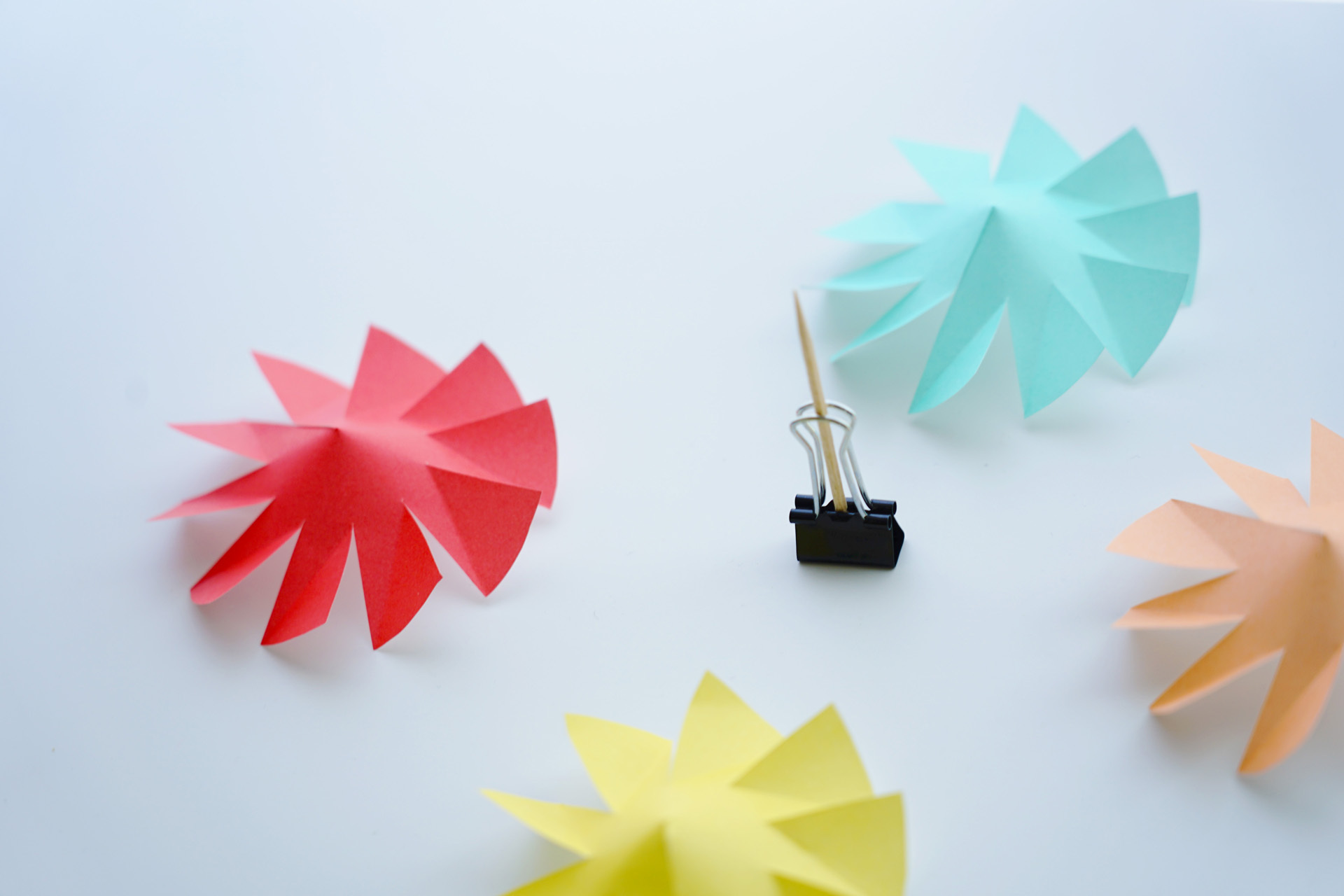
ーTell us about the winning entry in the Exploring the Gentleness of Nature AWARD: 'Sensing the Gentle Breeze: Windmill'.
The 'Windmill with a gentle breeze' is a work that I came up with as a designer to see what I could do for the world in the event of a new coronavirus pandemic in 2020.
This work can be easily produced using only tools that are available in every household: toothpicks, paper clips, origami and cellophane tape. By placing the windmill by the window, this product allows you to visualise and feel the small breezes that occur spontaneously or accidentally in everyday life.
ーHow did you get the inspiration for the idea and theme of 'easy to make with things around you'?
During the Corona disaster, I was forced to refrain from going out/working from home for a period of time, and my 'home time' increased significantly. When the call to "ventilate" was heard everywhere, I thought it would be nice if I could do it in a fun and voluntary way, rather than obligatory, and came up with the idea of "a wind turbine that anyone can make from things at home". I started creating this project with the hope that I could make the first step to encourage people to ventilate, which naturally led me to the theme of 'something that can be made with things around you'.

ーYou have won many awards in competitions other than AWRD. What motivates you to enter competitions?
I find competitions enjoyable because I like to think about the theme and find my own answers to it, regardless of whether or not I win a prize. I like to think about designs and ideas given a theme, so I am always thinking, not only in competitions. It is fun for me to answer a question (theme) with a design, like a big joke, and I actively try things that interest me.
ーI see that you enjoy taking part in the project itself. What have you found positive or changed since taking part?
There are a lot of things I didn't win awards for, but I've become somewhat aware of what is required in terms of themes and subjects as I've done more and more of them. I feel that this is also alive and well in my client work.
Sometimes I receive vague requests for client work where the concept has not yet been defined, and in such cases I am now able to search for answers to such "subjects" on my own and make proposals. I feel that this is something I have developed through competitions.

ーHow did you get started in production itself?
I have liked making things with my hands since I was a child, but it was in my first year at vocational school that I felt that I had clearly started creating. I remember that I enjoyed all the assignments I was given in all fields while learning design in all fields, but I enjoyed creating them all. I wasn't bored with just the assignments, so I was also making proposals that went beyond the assignments and creating my own ideas at the same time. Looking back on it now, I think that is how I started working.
ーYou creates outputs spanning various genres such as graphics, products, and visual works. Are there any common aspects or elements that he consistently keeps in mind?
I try not to be overly conscious of each area as a field. I try not to be too conscious of each field as a field, but rather as if each field is connected to the others, so that no matter which field I am designing for, I can always think of other fields in my mind and complete my design work as a one-stop shop.
ーWhat else do you consider most important or particular in your daily production?
As a result, even if an idea is unrealistic, it often leads to some kind of clue, and the ideas and designs that emerge from it often lead to the final output.
From a 'thinking' perspective, I am conscious of 'logic' and 'emotion' in all my productions. In some productions, creation from logical thinking is important, while in other cases, intuitive elements and beauty that appeal to the emotional mind are also important. I feel that the use and proportion of these elements is important in design production, so I am conscious of being able to use them differently depending on the production.

ーWhat is your most memorable work?
This is "stool SIZE", a chair made of paper.
This is a graduation project, and the concept was to create a chair (stool) that is strong enough to actually sit on, using a flat piece of 'paper'. The work focused on the strength and beauty created by the 'folds' of paper, and I succeeded in creating a chair strong enough to support a person by simply making five actual 'folds' in the paper. Inspired by origami, the chair (stool) was created entirely by hand through repeated trial and error.
ーIn works such as 'stool SIZE' and 'Windmill that feels the breeze', you combine different materials with existing products and add new ideas, which gives the works a playful feel. How do you come up with such a process?
Perhaps this is because we often come up with ideas in a child-like way, without thinking about everything too hard.
Even if it is unrealistic, I take everything that comes to mind with the feeling of "I wish I had something like this" as one of my ideas. For example, with 'stool SIZE', it would be nice if a sheet of paper could become a chair and you could sit on it...
How we could realize this would be a matter of trial and error later on, but that may have led to a playful spirit as a result.
ーYou have a lot of exciting ideas. Where do you find these ideas?
I am inspired by any beautiful and natural phenomenon that I see in everyday life, and it inspires me to create. For example, when I opened the window and saw the curtains being swept by the breeze, I thought it was beautiful and came up with the expression 'visualisation of wind', which led to the creation of the 'windmill that feels the breeze'. I am often influenced by each of these phenomena in my work.
ーWhat is the most important or important thing to keep in mind when continuing your production activities?
I have never been very conscious of this, but it may be important that I do not give up. I persist until the end in thinking about how to turn an idea I want to realize or an imagination I find interesting into reality. I feel that sometimes it is important to go and talk to specialists or ask for help with things that are difficult to do on my own. The joy I feel when something I had imagined takes shape after a process of trial and error is the main engine that keeps me going with my production activities.
ーYour work is born out of a strong motivation to realise your ideas. Do you use a different approach to coming up with ideas and designs when you work for clients and when you apply for awards?
We differentiate between 'my point of view' and 'the other person's point of view'. While I can be egoistic in a sense and produce the work I want to produce for an award, I produce client work from the perspective of the person who has commissioned me, with the image of creating the design together.
Sometimes, even in the latter case, I make proposals based on what the client is potentially looking for, and in such cases I sometimes feel that this is similar to a competition-style production method.
ーDo you have any message for creators who are considering entering competitions or awards in the future?
Without thinking too hard, I think it is a good idea to first think about the theme of the competition or award you are interested in, interpreting it in your own way. When you come across an idea or inspiration that you find interesting, I think you will have a sufficiently meaningful time if you consider applying for the first time.
The most important thing is to keep thinking, so don't stop thinking, chew it over in your own way, and if you come up with a good idea, why not apply proactively?
ーPlease let us know if you have any news about exhibitions or new products.
Currently, the company sells original rings made from paper. A mixture of glue and colouring agent is used to glue the paper together, and a technique is devised and used to create the expression by cutting out the paper. The rings have their own individuality, with no two rings having the same pattern. It is so strong and hard that it is hard to believe that it is paper, and can be used as a daily necessities without hesitation.
It is so strong and hard that it is hard to believe it is paper, and can be used as a daily necessities without hesitation, so please have a look!
Original brand "Kehahi" https://seinikaku.com/kehahi
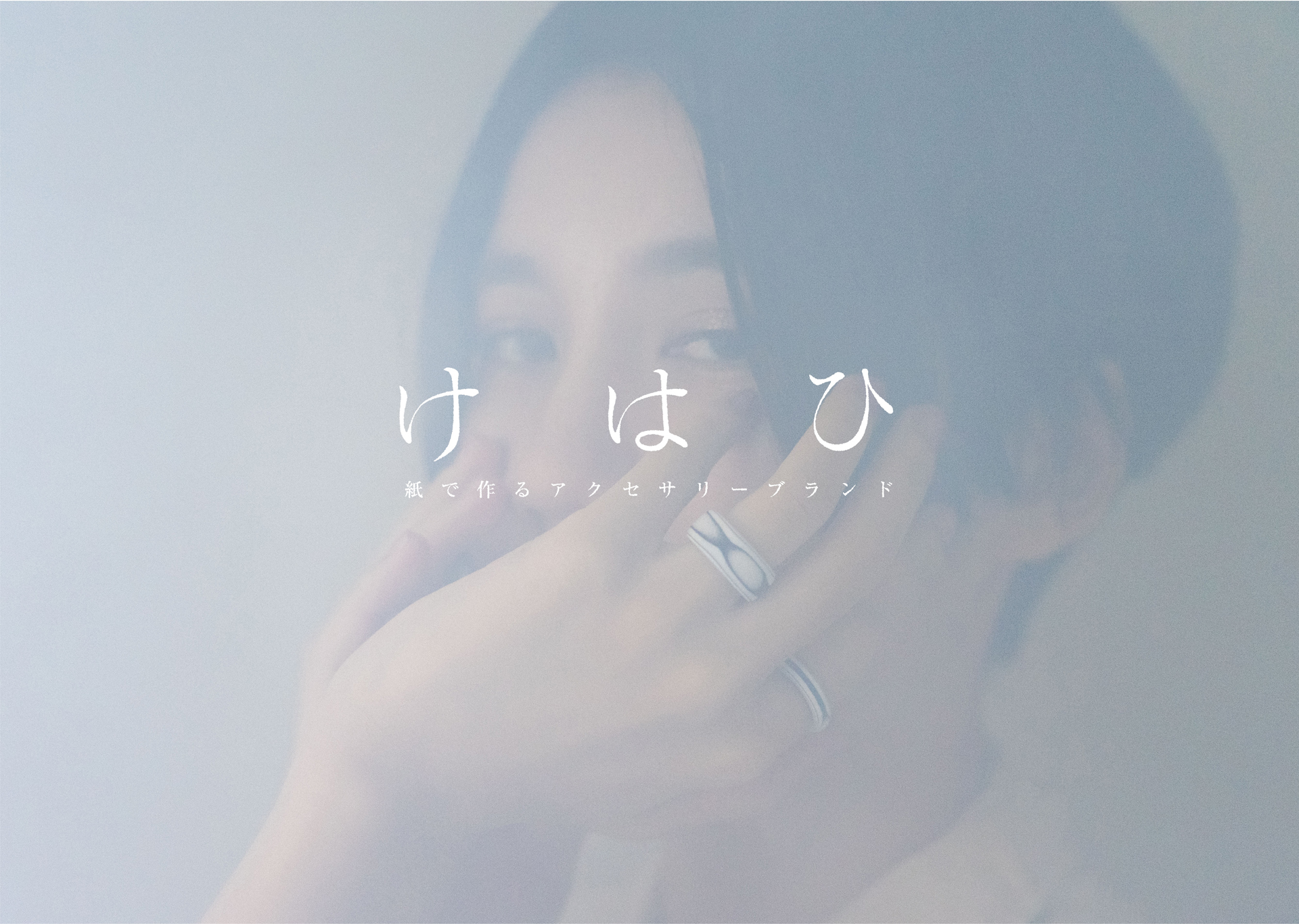
ーI look forward to seeing more works filled with your unique ideas in the future.

Kohei Fujiwara/SEINIKAKU DESIGN
Profile:
Kohei Fujiwara/SEINIKAKU DESIGN
Designer
Born 1997, Fukuoka. After graduating from the Kuwasawa Design School, he started freelancing as SEINIKAKU DESIGN in 2020.
His one-stop design activities include product design, brand design, logo design and packaging design, regardless of genre.
Links
Website for SEINIKAKU DESIGN
AWRD profile page
https://awrd.com/creatives/user/10575711
Written by AWRD Editor
